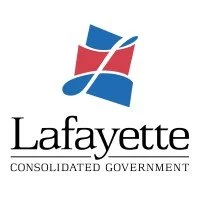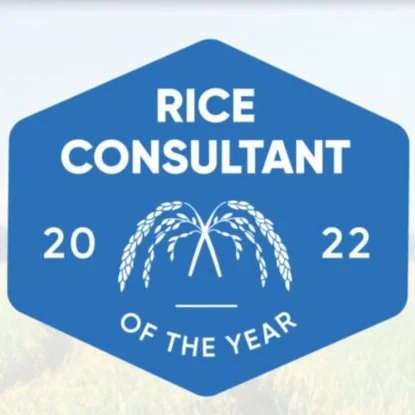In any ‘normal’ crop year, replanting costs play a substantial role in estimating the additional production cost per unit (bushel). However, inflationary pressures and input price volatility observed since the fall of 2021 have cut into expected profit margins for 2022.
Read MoreLast week, Congresswoman Julia Letlow (R-LA) was appointed to serve on the U.S. House of Representatives Committee on Appropriations that has oversight over almost all federal expenditures and determines all discretionary spending.
Read MoreThis week, the Agricultural and Food Policy Center (AFPC) at Texas A&M University released a study on the impact of commodity price changes and higher input costs on its 64 crop representative farms, including rice farms, requested by Senator John Boozman (R-AR), ranking member on the Senate Agriculture, Nutrition, and Forestry Committee.
Read MoreDuring the next several weeks, the U.S. Department of Agriculture’s National Agricultural Statistics Service (NASS) will conduct two major mid-year surveys, the June Agricultural Survey and the June Area Survey.
Read MoreRice industry leaders gathered this week to share news, hear policy updates, and plan for the future and USA Rice staff was there.
Read MoreCrawfish production in southern Louisiana is changing. What used to be a secondary crop for rice producers is now often taking center stage.
Crawfish benefit from rice production, feeding on the plant stubble and thriving in a hospitable habitat.
Read MoreThe Central Region Rice Field Day is set for May 26th at Bieber Farms in Mamou.
Read MoreLast Friday, the U.S. Surface Transportation Board (STB) took major steps to address ever-growing rail service delays, beginning with issuance of an order to the four major rail carriers requiring regular reporting and plans for service recovery.
Read MoreThe Lafayette International Center Foundation, which serves as the Lafayette International Center’s advisory board, is pleased to announce the 22nd International Achievement Award (IAA) was bestowed upon the Louisiana Rice Industry during a ceremony at the International Center in downtown Lafayette on Thursday, April 28, 2022.
Read MoreLSU AgCenter researchers continue to study the benefits and challenges posed by the alternative rice growing method of planting rice on furrow-irrigated rows.
Read MoreMembers of Senator John Kennedy’s staff from Washington D.C. and local Louisiana offices spent an afternoon here to visit and learn more about the current issues facing the U.S. and Louisiana rice industries.
Read MoreARLINGTON, VIRGINIA – Combined, the countries of Central America are the second largest export market for U.S. rice. However, changes in consumer preference and U.S. quality vis-à-vis other origins has put U.S. rice at a disadvantage. The U.S. industry needs to find a solution, so Dr. Steve Linscombe sat down with three people hard at work on this for The Rice Stuff podcast episode 44, available now.
Read MoreNominate an outstanding consultant for the Rice Consultant of the Year Award. It is helpful to include background information about the consultant and support letters from people who know him or her.
Read MoreWhile Clearfield variety development had been a major focus of the LSU AgCenter rice breeding program over the past 15 years, for the last three to four years the emphasis on conventional lines has greatly increased based on growers’ needs.
Read MoreThe first session of our Rice Leadership Development Class was a real eye opener for me because I realized how big and important rice is here, something I don’t often see in Florida where I am from. Over the course of the week, we visited with a plethora of organizations and their leaders, and I was impressed with how many are alumni of this program. That further cemented my appreciation for being selected for this program.
Our journey began on Sunday as we gathered in Katy, Texas. I was fortunate enough to join our California classmates on the connecting flight from Dallas to Houston. We hit it off right away and I think bored the passengers around us with rice talk!
Monday we had a full schedule that started with a presentation by Dr. Steve Linscombe, who also was our host, on how the USA Rice Federation goes about its business helping American rice producers navigate challenges pertaining to marketing, politics, international trade, grower relations, and more. I was specifically interested in the legislative process and how rice farmers can have a great impact on outcomes in that area. Veronica Galvin, with the U.S. Rice Producers Association, talked about the advocacy that organization does on behalf of U.S. rice producers. Next, Michael Creed, COO & CFO of Creed Rice Company Inc., had us role play as rice brokers to learn about the intricacies of international rice markets, and Steve Powell, with Solum Consulting, put us through the public relations wringer. Dr. Linscombe had warned us about the tough questions and topics we’d face when simulating a real-life media interview, and Mr. Powell came at us as a reporter looking for a scandalous story. I’m happy to report that we all held our own, and learned how to turn the media conversation back to what we know and what really matters to our industry.
Tuesday was our first day on the road and started with a tour of RiceTec headquarters in Alvin, Texas, where Traci La Chance and Dr. Brian Ottis talked about the company history and the challenges of producing hybrids. I plant RiceTec hybrids on my organic farms and they always seem to persevere and produce no matter what conditions they face. We also met Traci’s father, Jacko Garrett, a living legend in my book, who shared how they experimented with planting rice at rates as low as two pounds per acre and still produced.
We had lunch with Terry Hlavinka and heard about his work in Africa helping farmers there acquire equipment to produce rice. Terry is a self-made entrepreneur with an intriguing story that includes ownership of several water parks that provide jobs for hundreds of people during the summer months. After lunch, Timothy Gertson took us to one of his freshly planted rice farms where he explained his issues with water and how it plays a major role on whether or not he can get a ratoon crop. Timothy is a jack of all trades with a crop-dusting business and a drying bin operation in addition to his rice farming. Next up was Rice Belt Warehouse where Heath Bush and Dick Otis talked about how the loss in rice acres in their area has affected their business, pushing them to think “outside the box” to find other grains to fill their huge silos. Our last stop in Texas was Wednesday morning and a tour through Douget’s Rice Mill in Beaumont. I’ve only had one tour of our rice mill in Florida and I appreciated seeing the color sorter machinery in action.
At the Port of Lake Charles in Louisiana, we met Therrance Chretien who gave a presentation on the history and function of the port and then took us on a tour where we were reminded of the destruction Hurricane Laura caused in 2020. The Port of Lake Charles is still recovering! We heard a similar hurricane recuperation story from Philip Bertrand at Farmers Rice Milling Co. when we toured their packaging facility and mill operations room. We also visited the nearby Southwest Louisiana Rail Facility where a milling facility is currently under construction. We finished our first day in Louisiana at our classmate Julie Richard’s farm where she and her husband, Christian, hosted a crawfish boil sponsored by the Louisiana Rice Growers Association and the Louisiana State University Rice Research Station.
When we arrived at Supreme Rice Mill in Crowley on Thursday, I knew it would be impressive upon seeing their backyard baseball field! Supreme CEO Bobby Hanks, who also chairs USA Rice, emphasized the mill’s dependence on their relationships with growers to maintain the tremendous volume for their packaging lines. At the H. Rouse Caffey Rice Research Station, we met a team of rice researchers who took us to the greenhouse for a lesson in rice breeding. I was most intrigued by the way they pollinate the plants; it’s a meticulous process. We also got an in-depth look at rice/crawfish rotation visiting with Fred and Paul Zaunbrecher at their operation in Duson. We rode in one of their boats and experienced firsthand how intense running the lines can be.
Friday, the last day of our incredible journey, started at Russel Marine Group where we donned orange safety vests and boarded a boat for a tour of their loading facility on the Mississippi River. The sheer size of the river and strength of the currents was overwhelming! Back on dry land, we toured the USDA-ARS Southern Regional Research Center where we learned how they try to make the consumer experience a better one by uniquely modifying byproducts from the commodities we grow and converting them into items that are edible or that may allow consumers with certain allergies to consume them.
Session One was an incredible experience for me and I learned so much. Every stop was unique, and the expertise and professionalism on display throughout our industry is impressive.
Read More














